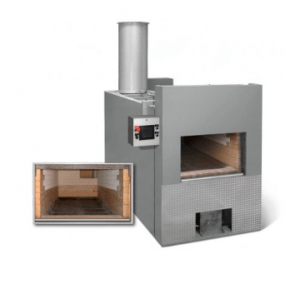Cremation 101
The first part of this series discussed the myths surrounding cremation. Now the focus turns to the methods used in cremation; this will provide better information as we consider cremation and other options. Before choosing cremation, one should understand the process. Cremation is the process by which a body is traditionally consumed by fire. However, according to the Cremation Association of North America, it “is the mechanical, thermal, and or dissolution process that reduces human remains to bone fragments. Cremation also includes processing and pulverization of the bone fragments.” (CANA website) This definition seems to point to something beyond traditional use of heat and fire to cremate. Starting with traditional methods, we will review the processes that fall under the cremation umbrella.

Traditional Cremation Using Heat
According to Funeralwise.com, “[traditional] cremation reduces the body to its basic elements through a process that exposes it to open flames, intense heat and evaporation. This is done in a specially designed furnace called a cremation chamber or retort.” During the process:
1. The body is placed in a container made of some type of combustible material, such as cardboard or wood.
2. The body is exposed to temperatures between 1,400 and 2,000 degrees Fahrenheit for 1.5 to 2 hours.
3. During the time in the retort, most of the body burns for vaporizes away, leaving only bone fragments.
4. Bone fragments are collected from the cremation chamber and any metallic remnants of surgical devices are removed.
5. The bone fragments are placed in a processor/cremulator that grinds the bones into the fine material, popularly called “ashes” or “cremains.”
6. The cremated body is then housed in a temporary or permanent urn, along with a numbered disc used to identify and verify the body.
7. The cremated body is presented to the family for final disposition.
Alkaline Hydrolysis or Water Cremation
Alkaline Hydrolysis is the latest process attempting to move away from embalming and provide a greener alternative to fire-based cremation. The process uses water, alkaline chemicals, heat, and pressure to decompose the body. Instead of vaporizing much of the body like traditional cremation, this new process reduces the body to liquid, other than the remaining bone fragments. This process is performed in a pressurized chamber, uses less energy than the traditional cremation retort, and does not release gases into the air. The steps are:
1. The body is placed into the chamber and the amount of water and chemicals needed is determined.
2. Water and chemicals are added, along with heat up to 302 degrees Fahrenheit and pressure
3. In 3 to 16 hours the body is reduced to liquid and bone fragments
4. Bone fragments are dried and placed in a processor/cremulator that grinds the bones into the fine material, popularly called “ashes” or “cremains.”
5. The cremated body is then housed in a temporary or permanent urn, along with a numbered disc used to identify and verify the body. Since fire is not used, there is a larger quantity of bone fragments left, which may require a larger urn.
6. The cremated body is presented to the family for final disposition.
How Do They Stack Up?
In both processes, the human body is reduced to a fraction of its size; The nature of the remaining bone matter or “ashes” does not require any type of preservation. Both processes argue a green alternative to embalming, casketing, and placing the body in a concrete vault. Neither, however are free from the use of carbon energy of reduce the body to its final state. Currently, not all states allow water cremation, but traditional cremation is allowed throughout the U.S. Cremation tends to be less expensive than embalming as well, especially since a casket, vault, or tomb are not required. However, either process must be understood for what it is. The death care industry has improperly labeled cremation as final disposition of the body; This is an inaccurate statement. Cremation is actually preparation of a body, much like traditional embalming. Once the process completes, the final resting place still must be decided and utilized. In this way, cremation is just a variation of preparing a body for its final place.
Now that cremation can be understood, the next logical step is to investigate the reasons and motivations for this method of body preparation. Again, making an informed decision is better than making an uneducated one. In the last part of this series, we will discuss the motivations behind choosing cremation.
